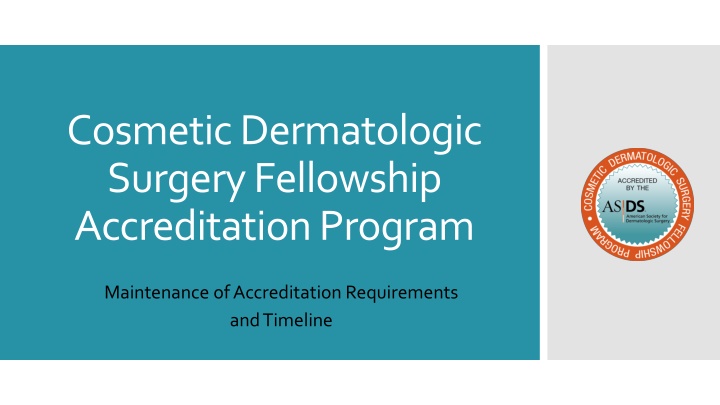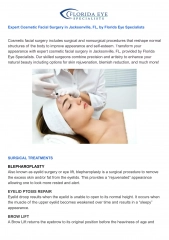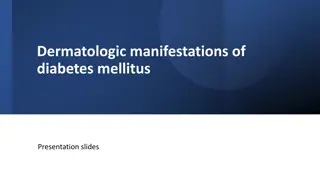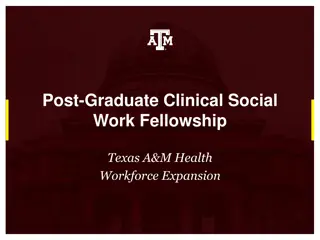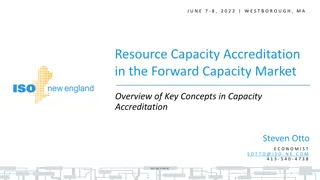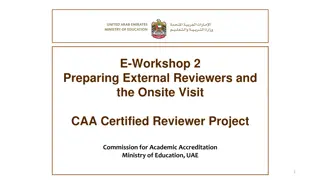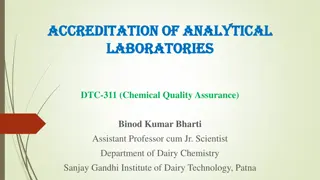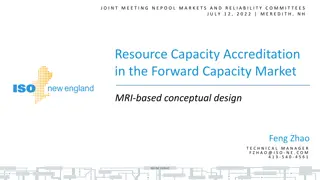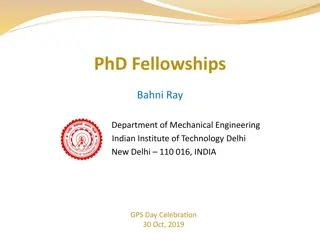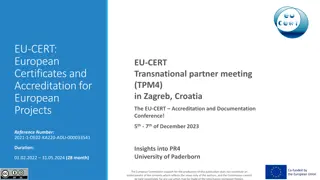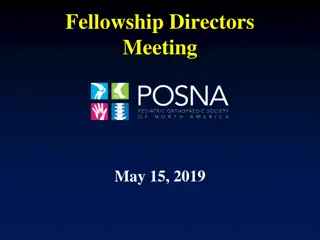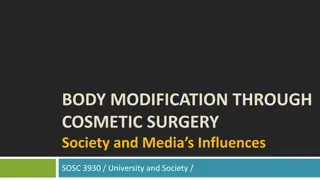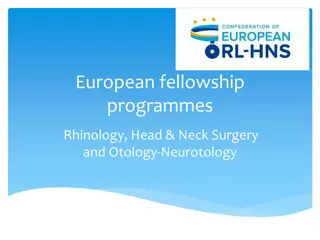Maintaining Accreditation in Cosmetic Dermatologic Surgery Fellowship Programs
Overview of the Cosmetic Dermatologic Surgery Fellowship Accreditation Program, including maintenance requirements and timelines. Key components of the fellowship involve training, case participation, observation, instruction, and exposure experiences. Prior to the academic year start, updates, recruitment criteria, and research funding opportunities are outlined. At the beginning of the academic year, maintenance tasks such as form submissions, evaluations, and policy updates are required. The online case log allows fellows to track their caseloads and share data with the fellowship director efficiently.
Download Presentation

Please find below an Image/Link to download the presentation.
The content on the website is provided AS IS for your information and personal use only. It may not be sold, licensed, or shared on other websites without obtaining consent from the author.If you encounter any issues during the download, it is possible that the publisher has removed the file from their server.
You are allowed to download the files provided on this website for personal or commercial use, subject to the condition that they are used lawfully. All files are the property of their respective owners.
The content on the website is provided AS IS for your information and personal use only. It may not be sold, licensed, or shared on other websites without obtaining consent from the author.
E N D
Presentation Transcript
Cosmetic Dermatologic Surgery Fellowship Accreditation Program Maintenance of Accreditation Requirements and Timeline
Overview This overview of Cosmetic Dermatologic Surgery Fellowship Accreditation Program (CDSFAP) is intended to serve as a resource for Fellowship programs seeking to maintain accreditation.
Key Components of the Fellowship One Calendar Year of training in the facility of the Fellowship Director (additional sites must be approved) The Fellows must participate (perform/assist) in 300 cases in at least 5 out of 8 procedure categories of cosmetic dermatologic surgery cases. The Fellows must observe 1,000 cases in at least 5 out of 8 procedure categories of cosmetic dermatologic surgery cases. The Fellow must receive didactic and clinical instruction in all areas of the curriculum. The Fellow must have exposure to experiences designed to augment training (teaching residents, attending and presenting at conferences, writing and reviewing clinical manuscripts)
Prior to the academic year start Annual Updates to the ASDS Dermatology Fellowship Finder are requested from all programs in early spring. New Fellow Recruitment and Qualifications: Fellow applicants are required to have completed an ACGME- approved or DO-affiliated dermatology residency program or a similar program in Canada accredited by the Royal College of Physicians and Surgeons of Canada before the start of the Fellowship. Applications from dermatologists trained in other countries will be considered by the Accreditation Work Group on case by case basis prior to the fellowship year start date. Explore ASDS Research funding opportunities for upcoming fellowship year: Cutting Edge Research Grant Program (CERG) Jumpstart Research Seed Grant
Beginning of the academic year Maintenance of Accreditation Annual forms due to ASDS: Hold Harmless Form Annual Attestation Form and Case Log Training Milestones Evaluation Maintenance of Accreditation Invoice Payment Ongoing Program Policy updates for each program s fellowship manual: Compensation and Benefits Working Hours and Moonlighting Malpractice Insurance with tail coverage Leave Policy Conflict Resolution
Beginning of the academic year Online Case Log The online case log allows Fellows to monitor their caseloads ensuring the requirements set for the end of the fellowship year are met. The current case log can be exported and shared with the Fellowship Director by the Fellow at any time. Separate access for Fellowship Directors is available. To access the online case log, go to: www.asdscosfell.com The Fellow logins are initially set up with the Fellow email (provided to ASDS by the program at the beginning of the fellowship year) and ASDS member ID (4 or 5 digit number) as the password.
Mid-year ASDS will contact your Fellow(s) regarding mid-year evaluations. The following are the elements of mid-year Fellow evaluations: Fellow Mid-Year Written Program Evaluation Fellow Case Log Mid-Year Submission Fellow Interview w/Accreditation Work Group Member ASDS Abstract Submission abstract submission deadline is usually in early May Note: ASDS Cosmetic Dermatologic Surgery Fellowship Milestones were developed as semi-annual evaluation tool for CDS Fellowship Directors. They are based on specific competency-based developmental outcomes and designed as a measurement of standard levels of achievement to assess trainee performance during fellowship.
The end of the academic year Program completion requirements: Fellow Final Written Evaluation Fellow Final Case Log Submission Program Director Final Fellow Evaluation and Acknowledgement of program completion: Case log documenting at least 1000 procedures in 5 out 8 categories Experience in teaching residents Scientific article for publication in a peer-reviewed medical journal At least two manuscript reviews for Dermatologic Surgery (or another peer-reviewed publication) Abstract of Fellow s research to the ASDS Annual Meeting for presentation following the completion of the Fellowship Program ACLS Training Fellows to post 1-2 cases quarterly. Each Fellow will receive Certificate of Completion from ASDS once all requirements are met at the end of the Fellowship year.
Notifications Immediate notification must be sent in writing to ASDS if any of the following occur: Fellow Incomplete Year Change in Training Location Departure of the Fellowship Director Disability or Death You can contact Hana Herron at hherron@asds.net.
Cyclical Site Reviews Documents to be available at programs for future reviews (every 5 years): Copies of scientific manuscripts from current and/or past Fellows published or submitted for publication in a peer-reviewed medical journal. Copies of abstracts submitted to the ASDS Annual Meeting from current and/or past Fellows. Copies of cosmetic training milestones evaluation documents. Documentation to support scientific paper review for Dermatologic Surgery from current and/or past Fellows. Samples of the use of the ASDS Accreditation logo.
ASDS Accreditation Logo Use The following is a list of scenarios and items in which the Accreditation logo can be used to designate an accredited program: Advertising Business Cards Signage Plaques Patient education materials Practice forms Practice stationery website It must not be placed in such a manner as to give the appearance that the logo is owned or controlled by any entity other than the ASDS.
Accreditation Handbook Complete program standards can be found at http://www.asds.net/cosmetic-accreditation/. Also included are: Curriculum Core Competencies Bibliography
We thank you for your commitment to meet standards of quality of the program and to promote practices that provide Fellows with the training and expertise to perform cosmetic dermatology procedures. For any additional information contact Hana Herron, ASDS Education Programs Manager, at hherron@asds.netor 847.956.9139.
